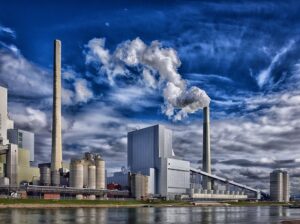 The Environmental Protection Agency (EPA) is working on a new so-called “super emitter” proposal that would target heavy methane emitters and hold them accountable. It’s just one example of how world governments and its agencies are cracking down on heavy polluters.
The Environmental Protection Agency (EPA) is working on a new so-called “super emitter” proposal that would target heavy methane emitters and hold them accountable. It’s just one example of how world governments and its agencies are cracking down on heavy polluters.
Here’s a quote from a recent article on the subject concerning the EPA proposal:
“Under EPA’s draft rule, approved third parties would make such complaints directly to owners and operators, triggering federal requirements. Companies would be required to analyze a leak within five days of being notified, according to an EPA fact sheet. In cases where a leak was caused by a malfunction, the operators would have 10 days to fix the problem. If mitigation would take longer than that, operators would have to develop a corrective action plan and schedule.” (Source: Energy Wire)
In Canada, the federal government announced a commitment to reducing methane levels to 2012 levels by 2030 so the US isn’t the only country looking at emission reductions. It’s a growing concern for anyone that pollutes and might be held accountable.
How will this be tracked and what does this mean for oil & gas companies?
Methane Tracking From Above
Below is an interesting video about satellite technology used to monitor methane gas releases in the United States. Heavily polluting businesses will be easily identified for any methane releases and be required to reduce venting emissions or have significant financial consequences as part of this proposal.
The focus will be companies which emit more than 100 kg of methane emissions per hour. An incidence of such excess venting would be declared a super-emitter event for which the company would be cited.
You can read accounts of this targeting here and here to start with.
This report found that tank emissions problems were 60% from cold venting, 30% from tank over pressuring, 7% due to load out and 3% from other problems.
It’s worth taking a look to see how far new regulations may go, and to consider what measures to take to tackle the majority of emissions.
Here’s the video in question.
Vapor emissions and vapor recovery is a popular topic
In the graphic below, we can see Google Trends search comparisons for three terms on Google.com for vapor recovery, vapor emissions and methane emissions.

Google trends show that the issue of vapor emissions is a popular topic that is widely searched. Vapor recovery = blue, Vapor emissions = red and Methane emissions = yellow.
They are related topics and the results show that the focus on these emissions lies with interested parties focused on Texas, California, Florida, New York and DC.
In Canada, emissions research is based in both Alberta and Ontario, where a majority of potential emissions but also trend-setting legislation originates.
How to Mitigate Vapour Emission Problems
What can you do if your site could be venting beyond upcoming permissible volumes?
OilPro can help you in three ways:
XTT
OilPro offers the Xtreme Tank Technologies (XTT) tool for vapour recovery. It can mitigate the issues of heavy vaporus flashing and reflashing inside the tank leading to vapour emissions that will eventually be taxed.
The XTT not only offers enhanced vapour recovery but additionally offers tank owners the optional benefits of fire suppression, and optimized liquids management.
Tank and Heater-Treeter Emissions Solutions
OilPro offers producers two options to mitigate vent gas while making valuable condensate. We have both a a Liquid Stripper solution for condensate conditioning and VaccuPress venturi-based technology for tank vapour recovery to choose from.
Both are practical solutions using tried technology to eliminate tank emissions while producing condensate otherwise wastefully vented or flared. Solutions additionally offer revenue generation through condensate re-sale or crude oil API gravity improvement through blending.
Qnergy PowerGen
Qnergy’s PowerGen from OilPro is a remote power solution for your mission-critical applications that also helps the environment. Available in 1800 and 5650 Watt power configurations, for site electrifiction and in combinationo with its Compressed Air Pneumatics (CAP3) lineup offer methane emissions mitigation benefits. The CAP3 Nano, CAP3 M and two CAP3 F options add vent gas replacement with reliable, clean instrument air while offering plenty of power for on site critical power needs with a load-following charging system that requires relatively small battery banks kept in optimal charge state and optional waste heat glycol tracing.
Click here for a discussion and comparison of each option.
Summary
Vapour emissions is a growing concern for those in the oil & gas business including fuel tank storage. How you deal with can become a cost to your business or, by implementing any or a combination of the above, it can be become an opportunity to improve site reliability and bottom-line improvements at the same time.
What makes the most sense for you?
Call OilPro directly at +1 (403) 215 3373 for more details or send us an email to [email protected] and we’ll find optimized solutions together..
